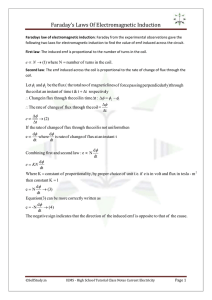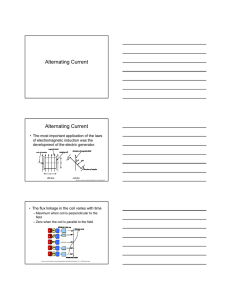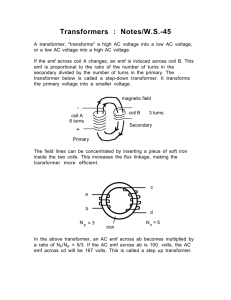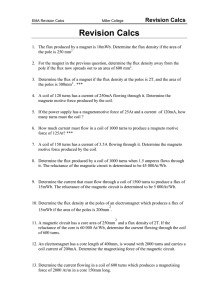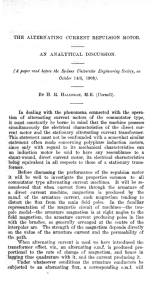2-Alternating Current and Transformers
advertisement
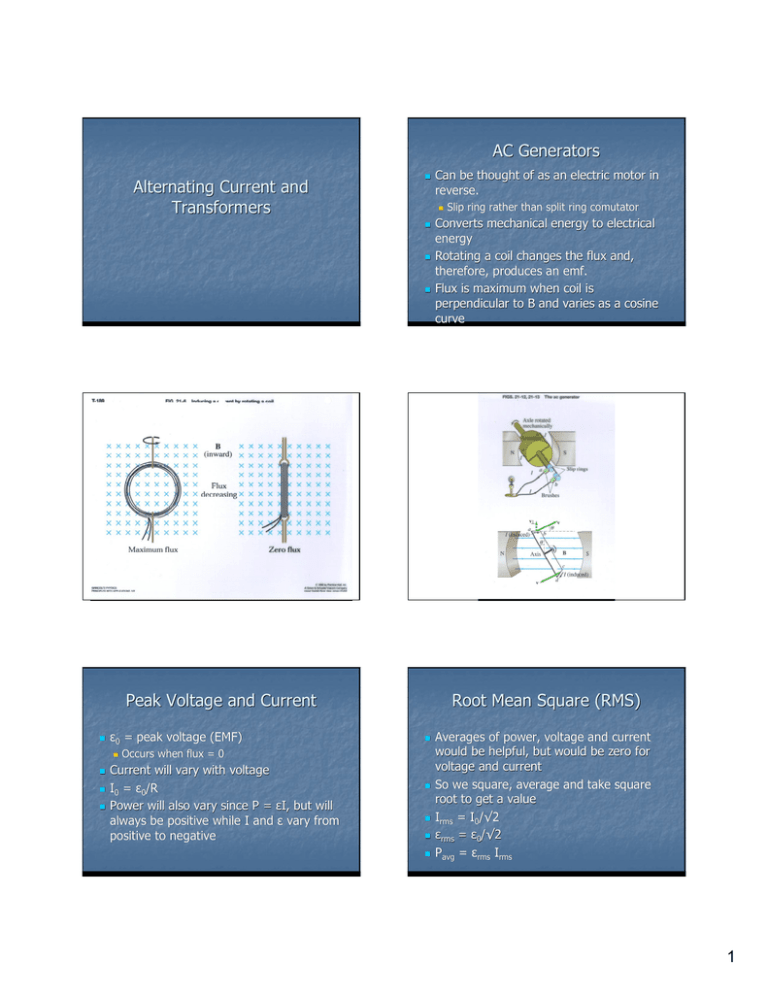
AC Generators Alternating Current and Transformers Can be thought of as an electric motor in reverse. Converts mechanical energy to electrical energy Rotating a coil changes the flux and, therefore, produces an emf. emf. Flux is maximum when coil is perpendicular to B and varies as a cosine curve Peak Voltage and Current ε0 = peak voltage (EMF) Root Mean Square (RMS) Occurs when flux = 0 Current will vary with voltage I0 = ε0/R Power will also vary since P = εI, but will always be positive while I and ε vary from positive to negative Slip ring rather than split ring comutator Averages of power, voltage and current would be helpful, but would be zero for voltage and current So we square, average and take square root to get a value Irms = I0/√2 εrms = ε0/√2 Pavg = εrms Irms 1 BackBack-emf A rotating motor armature is also changing it’s flux and, therefore, inducing an emf. emf. Lenz’s law says that the emf induced will oppose the flux that created it. Induced current will oppose current turning the motor So a rotating motor has more resistance than one that isn’t rotating. Why lights flicker when motors cut on and why motors burn out when not turning. A method to change voltage for distribution Two coils of wire connected by an iron core The Transformer A laminated core reduces power loss due to eddy currents AC in first (primary) creates a changing magnetic field, which creates a changing flux in 2nd (secondary) coil, thus inducing a current. The Transformer (Cont.) Vp/Vs = Np/Ns Ip/Is = Ns/Np Practice Problems: 1. 2. An AC circuit provides a peak voltage of 40 V and a peak current of 2.5 A. Calculate the rms voltage, rms current and the average power of the circuit. A transformer for home use of a portable radio reduces 120120-V ac to 9.09.0-V ac. The secondary coil contains 30 turns and the radio draws 400 mA of current. Calculate: (a) the number of turns in the primary coil; (b) the current in the primary coil; and (c) the power transformed. 2




